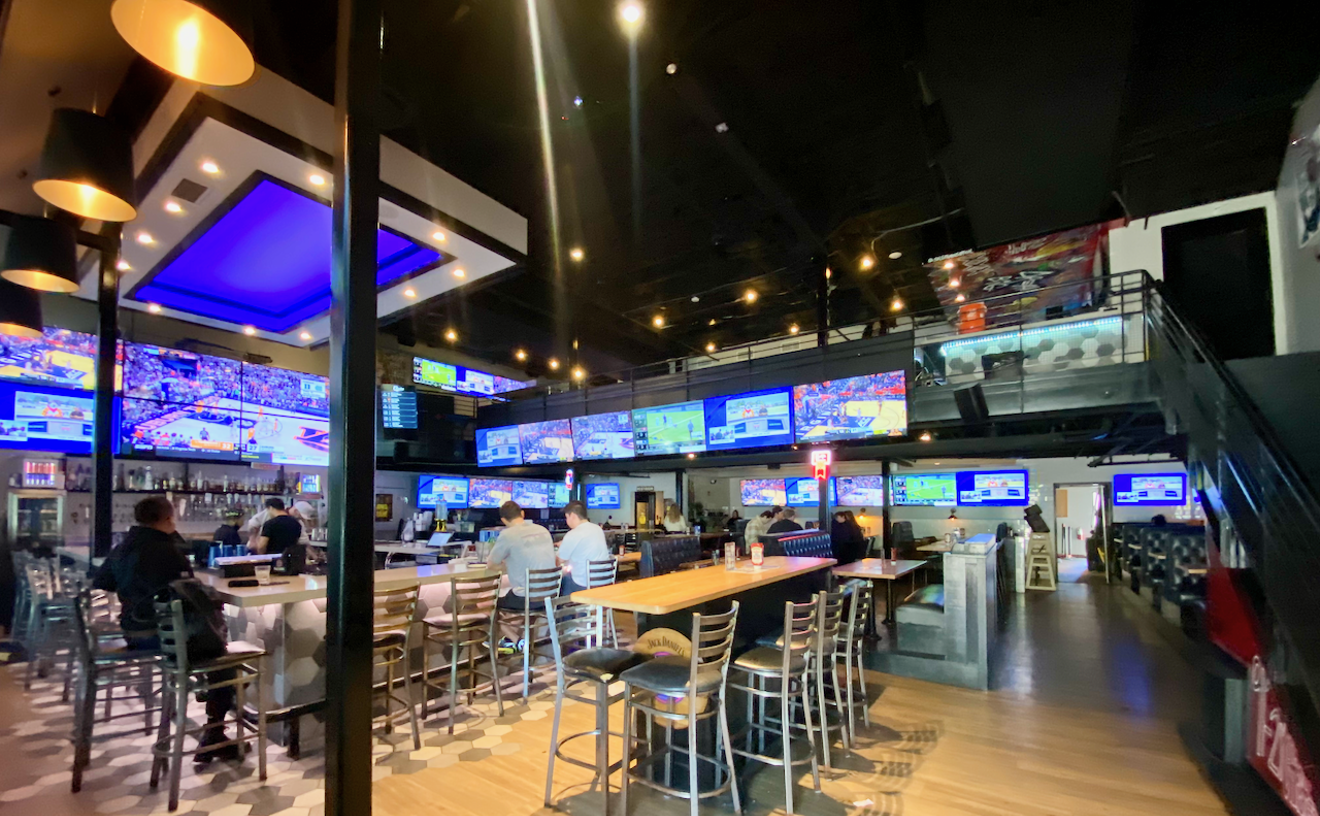The importance of serving wine and spirits in the correct style of glass is pretty well established. Order a Cognac at even the most laid-back of bars and it's unlikely that the bartender will pour it into a shot glass. Beer, on the other hand, rarely gets the same respect.
Unless you're at a place that specializes in craft beers, you're likely to get your brew--regardless of style--in the all-purpose pint glass. Hell, bartenders at Stan's Blue Note will even pour an IPA into a Mason jar. Beats a Dixie cup, at least.
But does the glassware really make that much of a difference?
Well, count owner of The Libertine Bar Simon McDonald and partner Dana Schumm among those who take proper glassware into consideration.
"There are more than 500 beers in Belgium, and in Belgium each one has its own glass that it's served in," Schumm says. "For example, Hoegaarden glasses are chunky so it doesn't get warm, because you want it to be cold."
As with wine glasses, the shape of glassware also directs how the aroma of the beer reaches your nose and what parts of your tongue the beer reaches first. Taste buds that detect bitterness are on the back of the tongue, Schumm says, so the ideal glass for an IPA or other hop-centric brew would tilt the beer towards that area. Malty flavors are picked up on the sweet-sensing buds on the sides of the tongue. Saltiness--which varies by beer depending on the water used by the brewery--is picked up at the front of the tongue.
Another important trait for good beer glasses is how they create and maintain the head, an important part of the drinking experience. In fact, proper service of a Belgian beer includes slicing off the very top of the foam, which eliminates CO2 smell and helps the tiny bursting bubbles to spread an ale's more pleasant aromas.
McDowell demonstrates with a Duvel ale poured into its signature glass, developing a huge head that takes up half the volume. He points out the tiny etched letter D in the bottom of the glass. The etching, he explains, creates a steady stream of bubbles that help keep the head steady. Sure enough, a tiny little fountain emanated from the logo, as it would from any rough spot inside the glass.
This is also a way to tell if a glass is clean. Bubbles will stream from anything stuck to the inside of a glass, even if you can't actually spot the impurity with the naked eye.
Of course, by then it's too late, so perhaps you're better off not looking too closely.
All that made sense on an intellectual level. But would we actually be able to taste the difference? McDonald poured a few ounces of Leffe blonde ale into a pair of rocks glasses to sample alongside our pints served in the brewery's signature chalices.
With just a sip from each, there was no mistaking that the flavors were decidedly more pronounced in the chalice than in the rocks glass. I wouldn't go so far as to say I could pick out a particular change to the flavor profile itself, but the carbonation was livelier, and the nose helped foreshadow what the tongue would soon be experiencing to strengthen the overall impression.
Even so, McDonald admits he only has a few glasses at his home, where he's not nearly as particular as he is for his customers. Lacking, say, a Leffe chalice, common sense can help you come up with a satisfactory replacement.
"You could even use a wine glass," he says. "Anything's better than nothing. As long as you're not drinking it right from the bottle."










